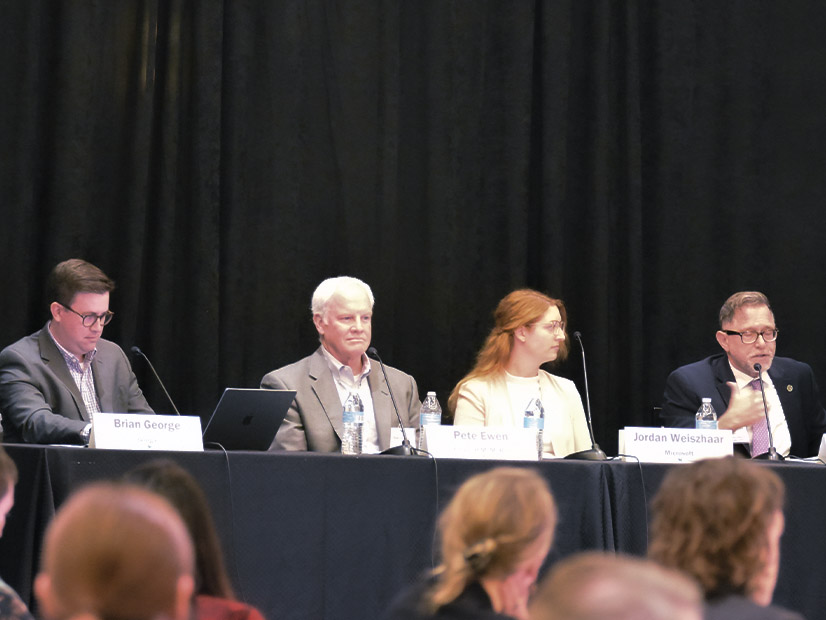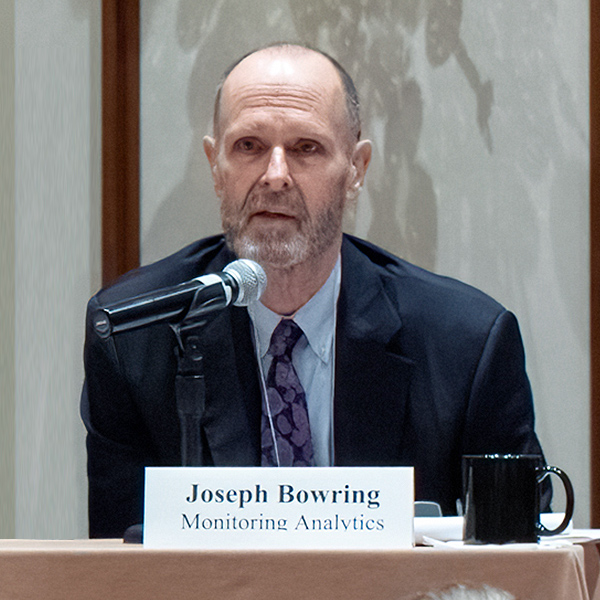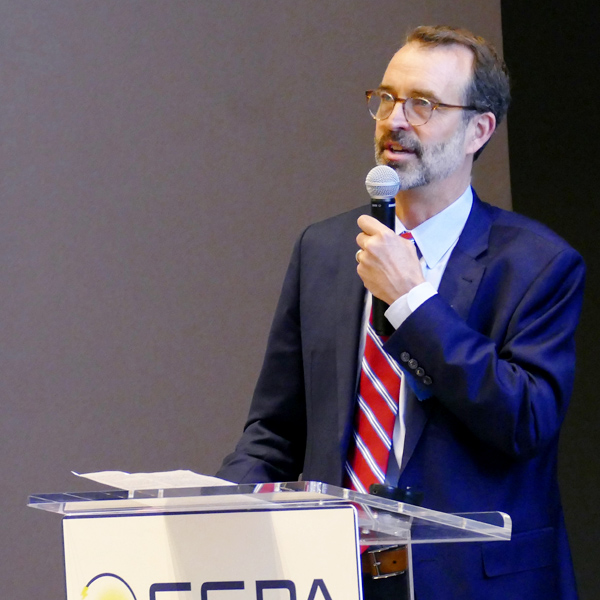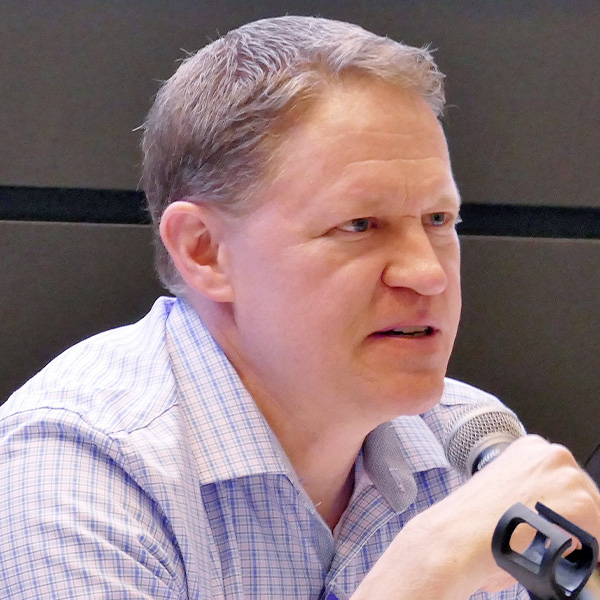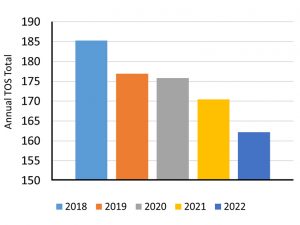SEATTLE — The Western electricity sector is at a “pivotal point in a lot of different ways,” Southern California Edison CEO Steven Powell said last week at a biannual conference of the region’s utility regulators and state energy officials.
Powell’s take on the sector was shared by many attending the joint fall meeting of the Committee for Regional Electric Power Cooperation and Western Interconnection Regional Advisory Body (CREPC-WIRAB) on the city’s waterfront. He was speaking Wednesday on a panel exploring the potential benefits of a more organized electricity market in the West, as well as the issues arising from the competition between CAISO’s Extended Day-Ahead Market (EDAM) and SPP’s Markets+ for future participants.
The outcome of that contest will set the course for the development of an RTO in the West, or two RTOs split by a seam, many in the sector think.
Powell said his utility “strongly believes that we should all be fighting for and working for getting to a single market in the West.”
“That is what is going to drive the most benefits broadly for customers and support the environment the best,” he said. He also acknowledged the challenges of getting the entire region on board for one market because of continued concerns about the lack of independence in CAISO’s governance.
Powell’s view had a lot of sympathizers in the audience, including the handful of utility commissioners who this summer proposed the West-Wide Governance Pathway Initiative, an effort to create an independently governed entity that would underpin a West-wide RTO that pointedly includes California and also contract with CAISO for market services. (See Stakeholders: Pathway Initiative Offers ‘Fresh Look’ at Western Market.)
The single-market perspective found support Friday from participants on a separate panel covering the challenges large energy customers face in procuring energy in a region fractured into 38 balancing authority areas.
Peter Ewen, regulatory strategy lead at Freeport-McMoRan — the largest copper producer in the U.S. — said his company spends $400 million to $500 million a year on electricity to power its Arizona mining operations, equal to about half the outlay of one of the largest utilities in that state.
Freeport-McMoRan operates a division to procure wholesale electricity and, like others who trade power in the West, has seen liquidity dry up in regional bilateral markets over the past five years. Ewen said the company can more cost-effectively obtain power for its operations in South America, where organized markets predominate, than in the Western Interconnection.
The company doesn’t have a “particular point of view” on whether CAISO or SPP should be the dominant market operator in the West, Ewen said. “We do think that one balancing authority as opposed to two is the best solution, but two is certainly better than 38.
“We do also see that a full RTO to provides all of kinds of benefits for the challenges that we’re seeing. … Stopping with a day-ahead market would be stopping short,” he added.
Sharing the panel with Ewen was Jordan Weiszhaar, program manager for data center energy cloud operations at Microsoft. Weiszhaar said much of the talk around organized Western markets is about reliability; she wanted to focus on how a market could encourage economic development.
“What we’re realizing is that what drove growth — economic development — over the last 10 years is going to be very different than what is driving the growth over the next 10 years. And how it’s going to be different is how it interacts with electricity — and I’m not just talking about [growth in] data centers,” she said, pointing to the increasing electrification of transportation and buildings.
In the face of that growth, Weiszhaar said, Microsoft is seeking to expand its data center operations, looking to reliably offer its customers critical services while still meeting its 2030 carbon-free energy target.
“In terms of what our largest challenges are in growing in the West … we are in such a large growth stage right now, we’re going wherever we can find capacity available on the grid,” Weiszhaar said, what Microsoft calls its “energy-first” expansion strategy.
Finding where that capacity will be in the future is especially difficult in the West’s fractured landscape of dozens of balancing authorities, where some planners can under-prepare for load growth.
“From our perspective, we can have fewer organized markets, where we have transparent price signals that show where loads are coming online, but also where the economic development has an opportunity to build … We’re going to have a much more efficient system to take advantage of the [economic development] opportunity coming in,” she said.
Commissioner Perspectives
Speaking on the markets panel Wednesday, Western Area Power Administration CEO Tracey LeBeau said her federal agency has been exploring RTOs for about 20 years.
“There’s several that almost came together and then fell apart at the last moment,” she said.
LeBeau said WAPA’s eastern customers have differed from those farther west in their desire to jump into a full RTO without taking incremental steps such as participating in something like CAISO’s real-time Western Energy Imbalance Market. In 2015, WAPA’s Upper Great Plains-East Region joined SPP. In September, the agency issued a decision authorizing its Colorado River Storage Project, Upper Great Plains and Rocky Mountain regions to join SPP’s RTO West. (See WAPA, Basin Electric Commit to SPP’s RTO West.)
“Eight years of experience working in that [RTO] context has been very, very successful,” LeBeau said.
She noted that WAPA’s Desert Southwest Region (DSW) this year joined the WEIM and has found prices there to be lower than in the region’s diminishing bilateral market. The agency continues to study the potential for DSW to join a day-ahead market and RTO in the future. She said some of the main drivers for considering deeper market participation include the need for WAPA’s Western customers to hit renewable targets, the retirement of dispatchable generation and the impact of drought on generating resources.
Nevada Public Utilities Commissioner Tammy Cordova pointed out that her state’s Senate Bill 448 requires NV Energy to join an RTO by 2030, although the law doesn’t make it clear whether EDAM or Markets+ would satisfy the requirement.
“We need to really get engaged really fast and figure out what this means in terms of joining an RTO,” she said.
One the biggest challenges for her commission, she said, is to identify what benefits it should be assessing related to joining a day-ahead market or RTO, including those related to rates, reliability and economic development — the last of which could include the potential to sell solar output to other states.
New Mexico Public Regulation Commissioner Gabriel Aguilera brought the market conversation around to the group that utility commissions are charged with protecting: ratepayers.
“The economic, reliability and environmental benefits that we all brag about are only theoretical unless and until we design and implement a market that works for customers,” Aguilera said.
“A market needs transparency, proper oversight, competition, level playing field, good management [and] respect for state and federal policies,” he continued. “All of these elements create the customer benefits that we’re seeing. So in trying to maximize these benefits, as you’re making these decisions to design the market, think about ratepayers.”
A signatory to the Pathways Initiative proposal, Aguilera warned about the impact to ratepayers of dividing the West into multiple markets, saying, “The broadest possible energy market or RTO also offers New Mexico entities a chance to avoid creating or exacerbating significant seams that would result in new costs and burdens that will be borne for decades to come.
“Seams costs between markets are not a one-time thing but are ongoing indefinitely, incurring costs for utilities and customers and raising policy headaches for states for the foreseeable future,” he said.
